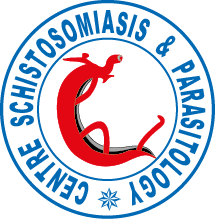Epidemiological and genetic observations on human schistosomiasis in Kinshasa, Zaire
Abstract
A survey for Schistosoma intercalatum conducted in Kinshasa, Zaire, in September 1994 revealed a prevalence of 3.6% (n = 167). Three isolates of schistosomes were made by exposing Bulinus wrighti to miracidia hatched from eggs collected from 2 infected children. Characterization of the isolates by biochemical (isoenzymes of phosphoglucomutase), molecular (restriction fragment length polymorphism and randomly amplified polymorphic deoxyribonucleic acid analysis) and morphological (egg measurements) techniques confirmed the existence of an autochthonous transmission focus of S. intercalatum in Kinshasa. The study also provided evidence of the occurrence of natural hybridization between S. intercalatum and S. haematobium. No potential snail host for either species was found in the 2 rivers examined. Apart from Bu. globosus from Zambia and Bu. wrighti, snail infection experiments showed an incompatible relationship between the parasite isolates and snails belonging to the Bu. forskalii group, the Bu. iruncatus/Bu. tropicus complex, and the Bu. africanus group.
